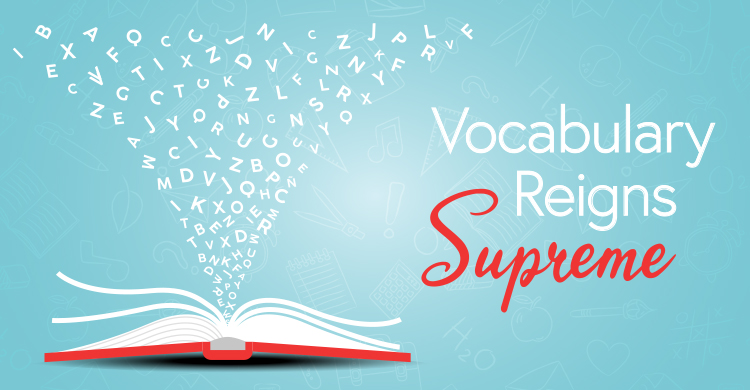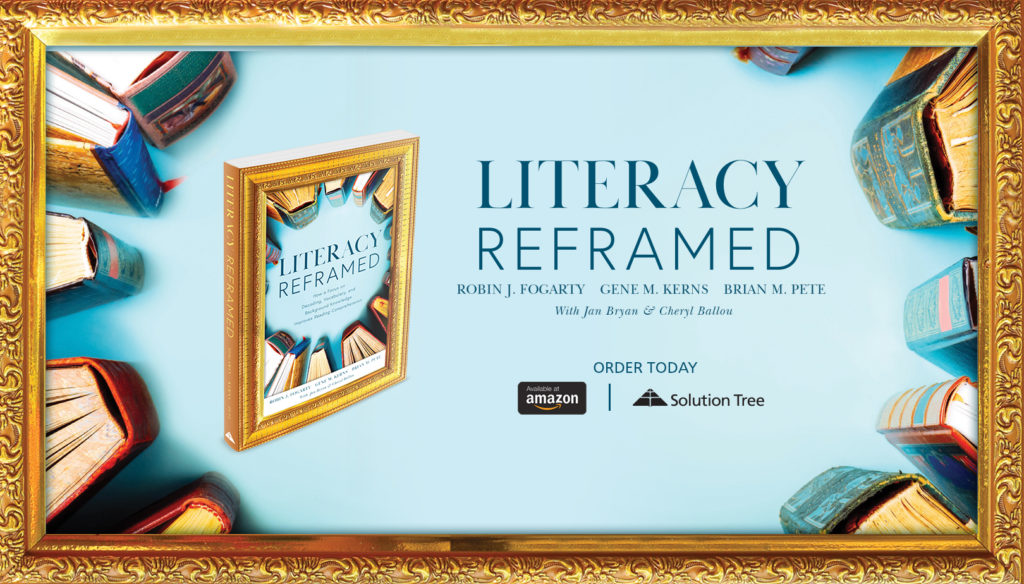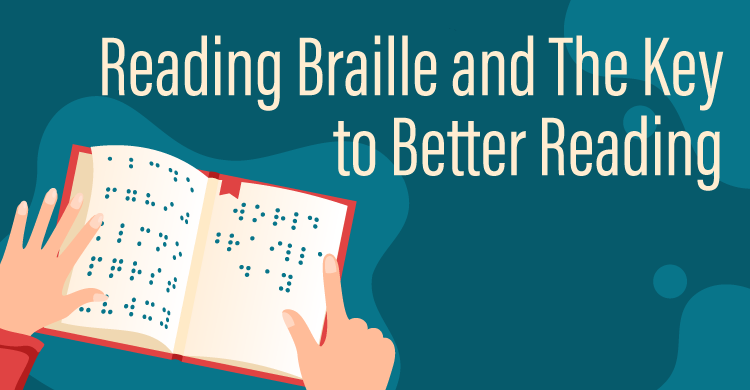Based on Literacy Reframed
“After we learn the mechanics of reading early on, through phonics and decoding, reading growth then depends, more than anything, on our ability to develop students’ knowledge base and vocabulary” (Lemov, 2015; Pinker in Hirsch, 2016; Shanahan, 2011, 2014; as cited in Schmoker, 2018, pg. 270).
This makes perfect sense because the true roots of reading are in the “knowledge learned and knowingness retained,” both of which are embedded and conceptualized as the reader makes meaning of the message.
Words matter!
Hirsch (2017) asserts that “vocabulary size is the single most reliable correlate to reading ability” (p. 48). The words you know profoundly affect and accurately predict what you will be able to read and comprehend.
Do you know the words in the text? If not, what percentage is unknown?
We need to know about 98 percent of the words to read fluently and with understanding. Context clues can help, but there is no argument that a great, gigantic, growing vocabulary is a reader’s best friend.
Explicit and implicit vocabulary
What we know about learning vocabulary words may surprise you. Two very different types of activities contribute to how students acquire vocabulary. First, there must be some direct, explicit instruction around vocabulary. Certain approaches, like focusing on Tier 2 words, roots, prefixes, and suffixes, can make these optimally effective, but there’s no way around the fact that direct vocabulary instruction is time-consuming.
We must also acknowledge that, as Cervetti, Wright, and Hwang (2016) proclaim, “it is not possible to directly instruct enough words to close the word knowledge gap” (pp. 773–774). Something beyond direct instruction must occur or students will never acquire the vocabulary scope that they need.
Willingham (2017) points at the answer when he notes that “much of the vocabulary that we know is not the product of explicit study, but is learned incidentally, either through conversations or reading” (p. 98). We can learn more words implicitly than we even can through direct instruction.
Students learn words incidentally going through daily experiences. Implicit learning is natural. Thus, it follows that extensive amounts of reading and being read to must occur. Students can learn vocabulary quite effectively through osmosis, if we create the conditions for this to occur.
Interestingly, this brings us back to our over-skillification conversation. If we are so busy trying to cover all of the standards and teach all of the various skills of reading that, at the end of the day, students have not read or been read to for appreciable amounts of time, we have our priorities confused.
Creating fertile conditions where all students are immersed in print should be our primary objective. Yet, Schmoker (2018) believes that “literacy-rich curriculum is exceedingly rare in our schools,” and that if you were to walk into any language arts classroom, the two things you would most likely not see students doing are reading and writing.
However, when the literacy reframed focus is on chunks of time to read and write, the rewards are immediately evident. Students are motivated and proud of their newly sensed scholarship. Increasing the rigor of pure reading and writing time in classrooms absolutely does accomplish its goal to expand literacy excellence. That is why the “literacy-rich” environment is where we focus in our book, and with ideas for teachers on the how-tos.
Read to, read with, or read alone
Reading means many things. It could be reading aloud from the energy chapter, or students reading in math pairs to understand the text explanation, or kids reading on their own, with a five-minute follow-up talk with the teacher.
Reading aloud to students is an opportunity to breathe life into texts that students are “unable to read independently.” Reading aloud also “exposes students to complex sentence structures and academic vocabulary.” Importantly, it also builds background knowledge.
In brief, it’s all about carving out time for reading, in and out of the classroom. And that will happen with teachers talking and sharing classroom reading demonstrations, to share how to make the change to more reading time. That is how teachers will commit to the radical changes required in reframing instructional time for literacy excellence. We must consider this seriously to abolish the flatlining in reading scores and begin the upward climb to expansive literacy successes.
Reading with a partner provides a flow as the two read along together, and it seems to benefit both readers from the interactivity.
Reading alone offers rare opportunities in class for students to focus on their own books, with parts of text to read or reread as needed.
It’s a treasured time for good readers. Yet, struggling students, reading alone, may require some guidance to make it a successful experience (a tutor, a recording, a shorter assignment, help with the reading choice, etc.). However, these students must always be included in the expected exercise so expectations are set for their success story.
The last word is about writing
It’s almost impossible to feature reading as paramount in the student learning cycle without linking it to student writing. “Writing to read” can be powerful for young readers as they conceptualize what they are learning.
On the other hand, “reading to write” is a more traditional assignment, using words that students are acquiring. It’s been said, “Ted Sizer described writing as ‘the litmus paper of thought’” (as cited in Schmoker, 2006, p. 20).
It’s simple, reading and writing together make literacy stronger, more flexible and most of all, more enduring.
Vocabulary quick-wins to try:
1. Implicit Vocabulary Development
Choral Reading: Let’s examine “Sarah Sylvia Cynthia Stout” by Shel Silverstein. Choral reading of all these unusual words that sound so good together keeps a fast and fluent flow going. Use any other book, passage, or poem that has nonsense words, rhyming words, or long lists of lyrical words throughout it, to spark the fluency of interesting language. Read together in a choral reading, or divide sections to read chorally as they rotate in and out.
2. Explicit Vocabulary Development
Write a step-by-step, detailed explanation as a “how to” paragraph.
Choose one: How to…
- Wash your hair.
- Make a peanut butter and jelly sandwich.
- Brush your teeth.
- Ride a bicycle.
- Get rid of the hiccups.
- Send a Tweet.
3. Content Area Writing
Write to learn. As predicted, writing about content, reliably enhanced learning (effect size = 0.30) was equally effective at improving learning in science, social studies, and mathematics, as well as the learning of elementary, middle, and high school students. It is a well-known insight that when students write, they deepen their own understanding. Take advantage of this fact, and get serious about students writing in your classes.
Remember, students from disadvantaged backgrounds show a characteristic pattern of reading achievement in school: they make good progress until around fourth grade and then suddenly fall behind. The importance of vocabulary and background knowledge gives us insight into this phenomenon.
In closing
Vocabulary building yields a positive impact to move readers from a competent level to the proficient level. Remember, there is no threshold for vocabulary. Thus, many, many words can be retained. After all, isn’t that how we learn most of our words? Doesn’t one’s listening vocabulary (sounds) lend itself to one’s speaking vocabulary (words)? And in turn, to one’s reading vocabulary (knowledge), and of course, one’s writing vocabulary?
Metacognition, or awareness of how to build one’s vocabulary, is an important reflection that grants one control. Once the reader knows “she doesn’t know,” she can try to recover using specific strategies.
References:
Cervetti, G., Wright, T., and Hwang, H. (2016). Conceptual Coherence, Comprehension, and Vocabulary Acquisition: A Knowledge Effect? Reading and Writing: An Interdisciplinary Journal, v29 n4 p761-779 Apr 2016 (pp. 773-774)
Shel Silverstein. (1974) Where the Sidewalk Ends, Sarah Sylvia Cynthia Stout – New York: Harper Row.
Schmoker (2018) Schmoker, M. J. (2018). Focus: elevating the essentials to radically improve student learning. Alexandria, VA: ASCD; Schmoker (p.131).
Share, D. (1995). Phonological recoding and self-teaching: sine qua non of reading acquisition. Cognition, 55, 151–218.
Willingham, D.T. , & Lovette, G. (2014, September 26). Can Reading Comprehension Be Taught? Teachers College Record. Retrieved from http://www.danielwillingham.com/uploads/5/0/0/7/5007325/willingham&lovette_2014_can_reading_comprehension_be_taught_.pdf
[author_bio id=”341″]
[author_bio id=”53″]







